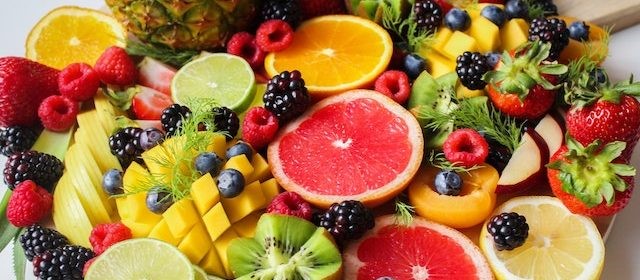From tomatoes to blueberries, explore the wealth of nutrients are packed into colorful foods. Defend your health naturally with a rainbow of choices.
By KS Correspondent
Eating a diet centered around potato chips and the devoid whites of refined carbohydrates, such as white bread, white rice, and white sugar, on a daily basis is unwise. Such a routine can result in elevated blood sugar levels, triggering the release of insulin and setting in motion a detrimental cycle of inflammation.
A more prudent approach involves incorporating a diverse array of colorful fruits and vegetables into your daily nutrition. The vibrant hues of these foods often indicate the presence of valuable nutrients that can contribute to the fight against cancer. These natural treasures contain phytochemicals, also known as plant chemicals, which offer substantial health benefits.
Although the precise mechanisms of these phytochemicals remain somewhat elusive, one thing is clear: a balanced diet that encompasses a variety of colorful fruits, vegetables, and legumes creates a synergistic effect that promotes overall well-being and reduces the risk of disease.
Red-hued options like tomatoes, watermelon, pink grapefruit, guava, papaya, and cranberries are particularly rich in Lycopene, an antioxidant renowned for its protective properties against cancers of the prostate, stomach, and lung. Foods high in lycopene, including tomatoes, have also been associated with a reduced risk of cancer and heart attacks. Notably, cooking these foods can enhance the body’s absorption of carotenoids, further bolstering their health benefits.
When it comes to orange produce, consider incorporating carrots, mangos, cantaloupe, winter squash, sweet potatoes, pumpkins, and apricots into your diet. These foods contain beta-cryptoxanthin, beta-carotene, and alpha-carotene—nutrients that can be converted into vitamin A. The beta-carotenes found in some orange fruits and vegetables may also play a pivotal role in lowering the risk of lung, esophagus, and stomach cancers.
Delving into the brown spectrum, legumes like beans, chickpeas, and lentils come to the fore. The American Cancer Society actively recommends the regular consumption of beans, and lentils, black beans, and chickpeas, in particular, play a substantial role in preventing heart disease. They are brimming with folate, a B vitamin that counteracts homocysteine, an amino acid known for its potential to promote blood clot formation.
Leafy greens, found in the green category and encompassing broccoli, cabbage, bok choy, and Brussels sprouts, offer a host of health benefits. These vegetables are rich in isothiocyanates and indoles, two phytochemicals that may possess anticancer properties. Moreover, their consumption has been linked to a reduced risk of heart disease. They are abundant in folic acid, vitamin K, carotenoids, and omega-3 fatty acids.

Incorporate the alluring shades of purple produce into your diet, such as blueberries, eggplant, blackberries, prunes, plums, pomegranates, beets, and purple cabbage. These fruits and vegetables derive their enchanting color from anthocyanin, a potent antioxidant. The anti-inflammatory properties of anthocyanin can be instrumental in reducing the risk of cancer and heart disease, as well as alleviating the painful effects of arthritis.
Leave a Reply